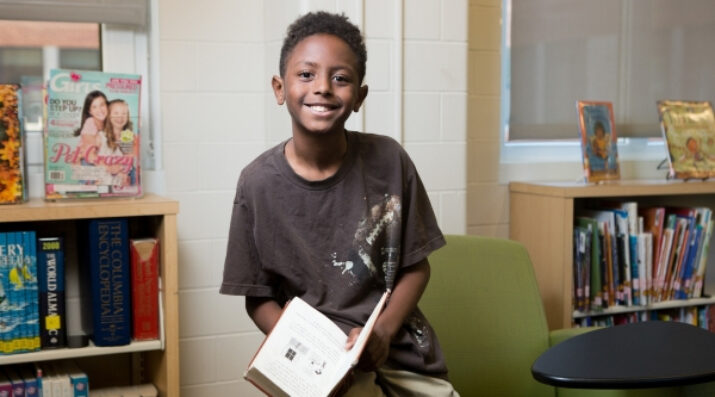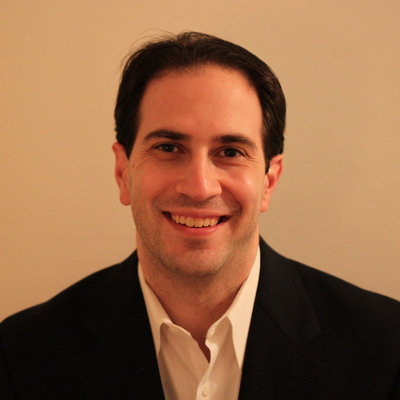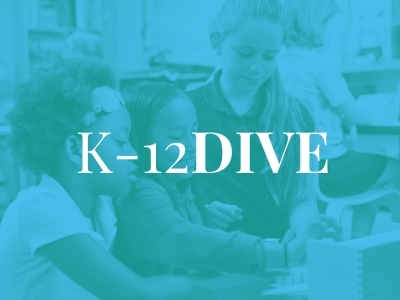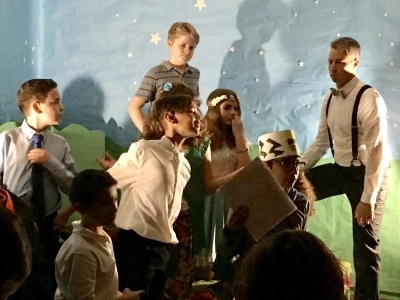Let It Breathe: The Case for Slow Schooling
Topics

Today’s learners face an uncertain present and a rapidly changing future that demand far different skills and knowledge than were needed in the 20th century. We also know so much more about enabling deep, powerful learning than we ever did before. Our collective future depends on how well young people prepare for the challenges and opportunities of 21st-century life.
Slowing down the treadmill of content and tests could help students develop craftsmanship, sustain attention and reflection, and build more knowledge, skill, wisdom, and judgment.
In 1986, the opening of a McDonald’s near the Spanish Steps in Rome led journalist Carlos Petrini to protest in an unconventional way. Rather than shouting slogans or holding signs, he and some of his friends handed out bowls of penne pasta to passersby, shouting, “we don’t want fast food…we want slow food.” And the Slow Food movement was born—a protest against the mass produced, bland food of much of modern capitalism, seeking to reclaim the power of lovingly made Italian pasta.
In subsequent years, the movement gained momentum, particularly with the publication of the Slow Food Manifesto in 1989, where Petrini and representatives from 15 countries came together to author a document that protested “the fast life.” In it, they write:
“Born and nurtured under the sign of Industrialization, this century first invented the machine and then modelled its lifestyle after it. Speed became our shackles. We fell prey to the same virus: ‘the fast life’ that fractures our customs and assails us even in our own homes, forcing us to ingest “fast- food”. Homo sapiens must regain wisdom and liberate itself from the 'velocity' that is propelling it on the road to extinction.”
In contrast, they proposed “slow food”: carefully prepared, reflecting local culture rather than mass production, and consumed with pleasure rather than used as fuel.
A few years ago, my longtime collaborator Alisa Berger proposed that we should have a “slow schooling” movement to parallel the slow food movement. I’m beginning to think she was right. Three stories might help illustrate why.
My first inkling came during COVID. I was homeschooling my kids (ages 6 and 8). We developed a modest schedule—one hour of math (generally in the form of puzzles and other kinds of math challenges), one hour of reading (their choice of book, generally on the living room couch), and one hour that varied, either some history or social studies (we live near Lexington, so the American revolution was an obvious candidate), or some form of project-based learning. And that was it. We were done by noon. We had some lunch, played some badminton in the backyard, and they spent the afternoons doing what they wanted. We were no longer rushing from one activity to the next. Mom’s birthday came, and we paused school to make some cards and homemade presents. And, when they got into things, like the older one did with reading Harry Potter, they could do that all afternoon, as if time didn’t exist. The kids reported they learned at least as much as they had in school (in half as much time); they certainly read a lot more than they did in an average year; and my younger son actually ended up skipping a grade after 15 months of home school.
Much like slow food, slow schooling suggests a different ethic—take your time, really invest in what you are doing, and, if you do, you will own and internalize what you learn, rather than continuing on a treadmill that leads nowhere fast.
My second inkling came from Ron Berger. Ron relates a story of his parents traveling across Europe on a tour package through 12 countries in 14 days. After returning home, they spread the photos across the kitchen table—so many beautiful cathedrals, castles, cities, and mountains. But they had a lot of trouble recalling which was which: “They constantly argued when explaining the photos: ‘This was in Switzerland! No, that was Germany… no, I think Austria.’ Because many of the photos were slightly blurry, framed by the train window, they really could have been almost anywhere.” Ron’s point is that his parents’ experience is much like what many of us experience in school—a dizzying rush from one piece of content to the next, in theory covering many major pieces of human knowledge, but in practice leaving us only with slightly blurry memories.
My third inkling also came from Ron Berger, this time a story he relates about a time the famous Piaget scholar Eleanor Duckworth visited his classroom. As part of a project to test the safety and quality of the well water in their town, students were using a tool called a mass spectrometer to test the water. Eleanor asked one 10 year old to explain how the spectrometer worked, and he pointed her to his page in the report that offered his explanation. She asked if he could explain that page verbally. He did. I think I get it,” Eleanor said, “but is there another way you could explain it to me?” The kid complied, and then whispered to Ron, “Your friend is very nice … but I think she is a little slow.” Maybe so, but slow in the best way—slowly examining the students’ mind, trying to see if he really understood, in a deep way, what it is he was doing and why.
Slow schooling may not make for a good bumper sticker—that’s why new schools lead with phrases like innovation, agency, and purpose. But it does represent a critical antidote to many of the problems of modern life—where the clock is king and many of us are endlessly rushing from one thing to the next. Much like slow food, it suggests a different ethic—take your time, really invest in what you are doing, and, if you do, you will own and internalize what you learn, rather than continuing on a treadmill that leads nowhere fast. Much as my own kids did, you might learn more by going slower, because there would be the time to actually understand what you were doing.
Let me anticipate some objections. What about the “gifted” kids? Isn’t school already too slow for them? I think this concern misreads slow schooling. A slow schooling world would involve less batch processing and would require taking more time to figure out what each kid really needs. Kids who were particularly facile in math, for example, could pursue extensions, develop proofs, or consider how to apply their learning in different ways. They would get a chance to really savor math—seeing it less like a race to see who can complete the material first—and more like an amazing way of understanding the world, with more branches and possibilities than can ever be exhausted.
What about learning loss, time on task, and the whole idea that, particularly for disadvantaged children, what we need is as many minutes as possible spent in academic time? I think the response here is to be selective and focus on what is really important. Yes, if a child is struggling to read, don’t have them chase the butterflies all day. But in a six and a half hour school day, there is plenty of time to do reading and math without feeling like we are Charlie Chaplin in Modern Times.
To put it another way, the problem is about parts and whole. Each part seems so important—“what if students don’t know X?” say the science teachers; “what if the students don’t know Y?” say the history teachers?—overlooking the fact that many of the adults in the building who aren’t teaching those subjects are functioning perfectly well without knowing X or Y. The sum total of all of this anxiety is that every minute of the day has to be crammed with something. No one is thinking about the total student experience, and whether there is any time to breathe. My kids get 20 minutes for lunch at school—the schedule is so packed there is no time to eat!
The sum total of all of this anxiety is that every minute of the day has to be crammed with something. No one is thinking about the total student experience, and whether there is any time to breathe.
A slow schooling revolution would also connect with important values that have gotten de-emphasized in modern capitalism. One is craftsmanship. As I was working on this piece I went for a dental cleaning, and the hygienist was careful and thorough, cleaning my teeth with care. That kind of craftsmanship is what we want from our surgeons, our house and road builders, even our CPAs—we want people who care about the work they are producing and will create with a certain level of quality. In contrast, most industrial schooling has a disposable culture very reminiscent of fast food—so many worksheets, so few assignments with meaningful questions and quality products. It may not be a coincidence that two of my stories above come from Ron Berger—he is perhaps the leading educator in the country emphasizing the importance of quality and craftsmanship.
A second critical value is a focus on the long-term over the short-term. As former Harvard president Drew Faust said at her installation address, the success of a university should be measured not by quarterly results but in millennia—whether the ideas or scholarship that they are producing is contributing to the future of mankind. The equivalent of quarterly reports in education are test scores. Not entirely unimportant, to be sure, but not really the point of the enterprise, which is to raise human beings with knowledge, skill, wisdom, and judgment. Those things come unevenly, and often in a one step forward, two steps back kind of way. The problem comes when we put all of this on an overly linear timeframe—we need to think more holistically about the long-term and what it is we are really trying to accomplish.
A third such value is sustained attention and reflection. Our modern technological environment has shortened our attention spans. Clips replace television shows or movies. Our phones and apps are literally engineered to rewire our brains to seek dopamine hit after dopamine hit. Schools should be places that fight that tendency and reward the sustained attention that is required to really understand something or make something of quality. Schools should also be places for deep reflection and contemplation, the kind that comes from thinking through hard things slowly.
These are hard lessons even for me. Every time I plan a class or a convening, the first draft has too much in it. It has taken years for my colleagues and I to realize that the most valuable time of our Deeper Learning Dozen convenings are the breaks where people can talk to each other, and that our most highly rated activities are always paired reflective walks. We’ve learned to make sure that there is good coffee at every meal, that there are plentiful snacks at every break, and that there is real down time before dinner. And those dinners themselves are often the highlights of the convenings, especially when they are at someone’s house or when they are accompanied by some singing around a campfire.
We don’t have to be shackled by the pace of industrialization. We need to be more human, feed all of our senses, and give ourselves time to reflect. Schools are not conveyor belts; they are places where our children learn what it means to be human. Slow it down. Let it breathe.
Photo at top by Allison Shelley for American Education: Images of Teachers and Students in Action.




